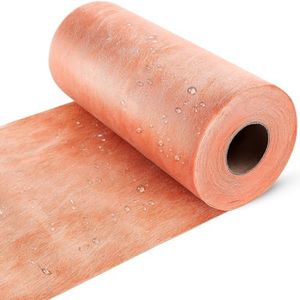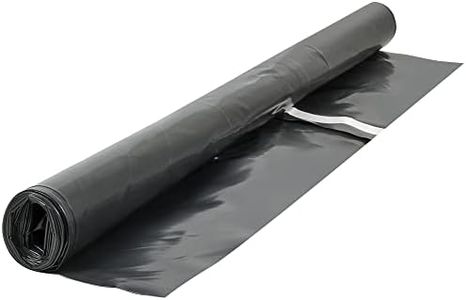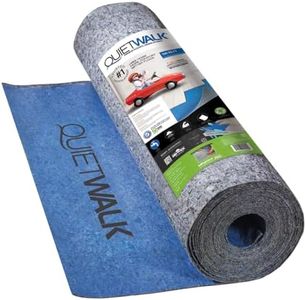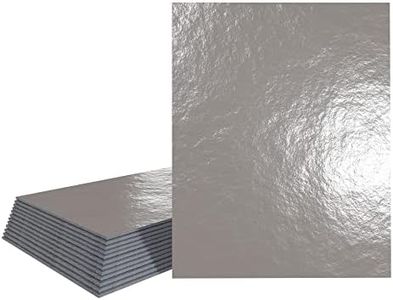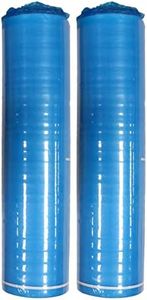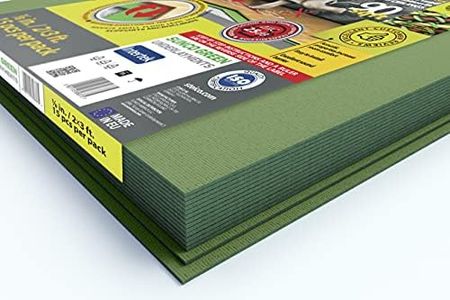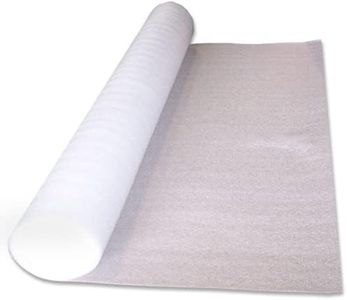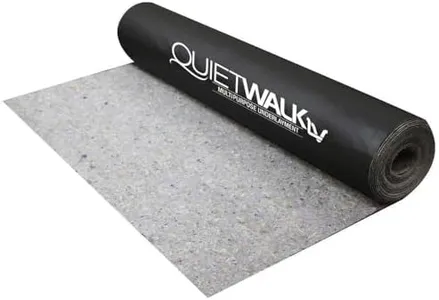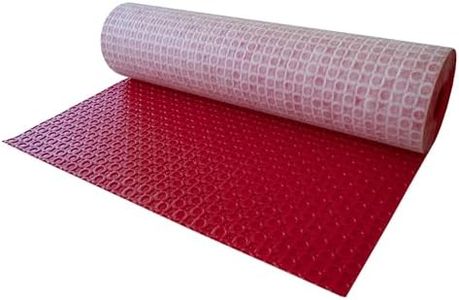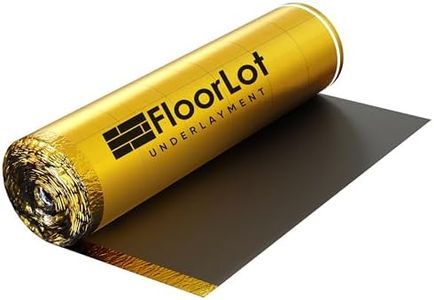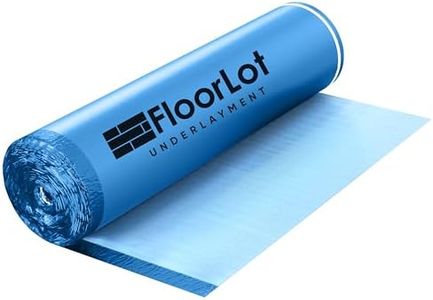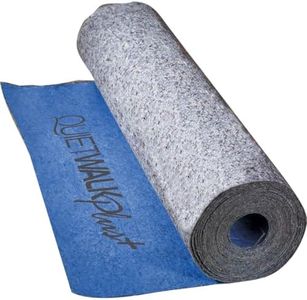We Use CookiesWe use cookies to enhance the security, performance,
functionality and for analytical and promotional activities. By continuing to browse this site you
are agreeing to our privacy policy
10 Best Laminate Underlayments
From leading brands and best sellers available on the web.By clicking on a link to a third party's website, log data is shared with that third party.
Buying Guide for the Best Laminate Underlayments
Choosing the right laminate underlayment is an important step when installing laminate flooring, as it can greatly affect the overall comfort, durability, and sound insulation of your floor. Underlayment not only provides a smooth surface for your laminate planks but also helps with soundproofing, moisture protection, and temperature insulation. Consider your specific needs, where the flooring will be installed (such as over a concrete basement or a wooden subfloor), and any noise reduction requirements before making a choice.ThicknessThickness refers to how deep or dense the underlayment sheet or roll is, usually measured in millimeters. It is important because it impacts how cushioned the floor feels underfoot, how well it hides minor imperfections in the subfloor, and how much sound and thermal insulation it provides. Underlayment commonly comes in options like 2mm, 3mm, or even thicker. Thinner options (2mm) are usually suitable for newer, even subfloors and when height isn't much of an issue. Thicker choices (3mm or more) are often picked for older or uneven subfloors, or when extra noise and temperature insulation is needed. Choose the thickness that balances comfort, subfloor needs, and any height restrictions your space might have.
Sound Reduction (STC/IIC Ratings)Sound reduction capabilities are measured by the STC (Sound Transmission Class) and IIC (Impact Insulation Class) ratings. These ratings indicate how well the underlayment muffles airborne and impact sounds, like footsteps or voices, traveling between rooms or floors. Higher numbers mean better sound absorption, which can be crucial in apartments, upstairs rooms, or houses with active households. If noise disturbance is a concern, look for underlayments with higher STC and IIC ratings. If your living space is already quiet, you might not need to prioritize these ratings.
Moisture BarrierA moisture barrier is a layer in the underlayment that prevents water vapor from seeping up from below, which is especially important when installing over concrete subfloors or in potentially damp areas like basements. Moisture barriers help protect your laminate flooring from damage like warping or mold growth. If installing over concrete or in any space with a risk of dampness, choose an underlayment with a built-in moisture barrier or lay a separate vapor barrier underneath. For installations over dry, wooden subfloors, you might not need this feature.
Thermal InsulationThermal insulation measures how well the underlayment helps keep warmth in your room, making floors feel less chilly underfoot and potentially saving on heating costs. Some underlayments have better insulating properties than others. If you’re installing flooring in a basement, ground floor, or colder area, look for products designed to provide extra thermal insulation. In warmer climates or upper floors, this might be a less important factor.
Compatibility with Flooring TypeNot all underlayments are compatible with all types of laminate or floating floors. Some flooring manufacturers require a specific type of underlayment for warranty or performance reasons, and some laminate planks already come with underlayment attached. Always check if the underlayment you’re considering works with your specific flooring and installation method. If your planks have underlayment attached, you usually don’t need another layer unless extra insulation or moisture protection is required.
